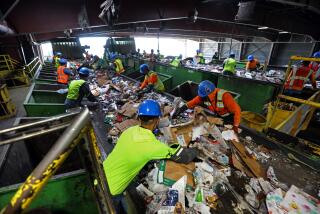Your cool black kitchenware could be slowly poisoning you, study says. Here’s what to do

Go to your kitchen, grab your black spatula and throw it in the trash. Immediately.
That’s the alarming message from a new study published in the journal Chemosphere. Cooking with any plastic utensil has long been seen as worrisome because heat can cause chemicals in the plastic to migrate into the food you’re about to eat. But researchers are now saying products made from recycled black plastic contain even more toxic components.
The authors of the Chemosphere study found that everyday household items that are made of black recycled plastic, including kitchen utensils, take-out containers, toys and hair accessories, have a high chance of containing dangerous levels of flame retardants and other toxic chemicals.
Flame retardants are getting into our most commonly used items because these black-colored products are being made from recycled electronic waste, such as discarded television sets and computers, that frequently contain the additives.
As with any other plastic cooking utensil, when you use a black plastic spatula while flipping your pancakes, the heat can encourage any flame retardant present to leach out of the flipper and into your flapjacks.
“That’s because flame retardants aren’t actually bound to the plastic polymers that they’re added to, it’s an additive. And heat can ease migration of chemicals out of products,” said Megan Liu, co-author of the study and science and policy manager for Toxic-Free Future.
The toxic chemicals are not in every black-colored item — for example, you won’t find them in a black spatula made of silicone. Nor are they in every black plastic item. The problem is, you can’t tell which plastic ones are risky and which aren’t.
Why get rid of them now?
If you’re looking at your black plastic products and thinking, “I’ve used it for this long and I’m OK,” Liu said these products play the long game.
Cooking daily with a black plastic product can lead to increased exposure to toxic chemicals over time.
Toys with black plastic can be even more harmful to young children, whose bodies are still developing.
Liu said studies have shown that toxic chemicals can leach out of children’s toys and into their saliva if they put the products in their mouth.
“It’s really concerning when you think about flame retardants, because they’re known to bioaccumulate in our bodies,” she said.
Experts agree, there’s no safe level of exposure for these flame retardants.
The buildup can lead to a variety of health issues, including increased risks of cancer, hormone disruption, fertility effects and damage to the brain and nervous system.
How do you know a product is harmful?
It’s nearly impossible to know whether a black plastic product is contaminated. That’s because these products that include recycled e-waste don’t disclose a detailed list of all ingredients and contaminants in the product.
Liu said it’s also unclear how many types of flame retardants are in these black plastic products.
Some of the products that researchers tested in this recent study “had up to nine different harmful chemicals and harmful flame retardants in them,” she said.
What can you do about it?
Experts advise consumers not to purchase any black plastic cookware or other products if possible. If you have some products in your kitchen or home, they advise you to throw them away.
There are many restaurants that place their to-go orders in black plastic containers. If you receive food in one of them, do not use it to reheat the food or your leftovers — transfer the food to glass or ceramic containers.
“Sushi trays had one of the highest levels of [a] flame retardant called deca-BDE [Decabromodiphenyl ether], which is really concerning because it has actually been phased out of the U.S. and banned” for several years, Liu said.
The U.S. Environmental Protection Agency banned the use of deca-BDE in 2021 after the chemical was linked to cancer, endocrine and thyroid issues as well as a host of other ailments.
What are safer alternatives?
The safest nontoxic material options for kitchen utensil are wood and stainless steel.
More to Read
Sign up for Essential California
The most important California stories and recommendations in your inbox every morning.
You may occasionally receive promotional content from the Los Angeles Times.











